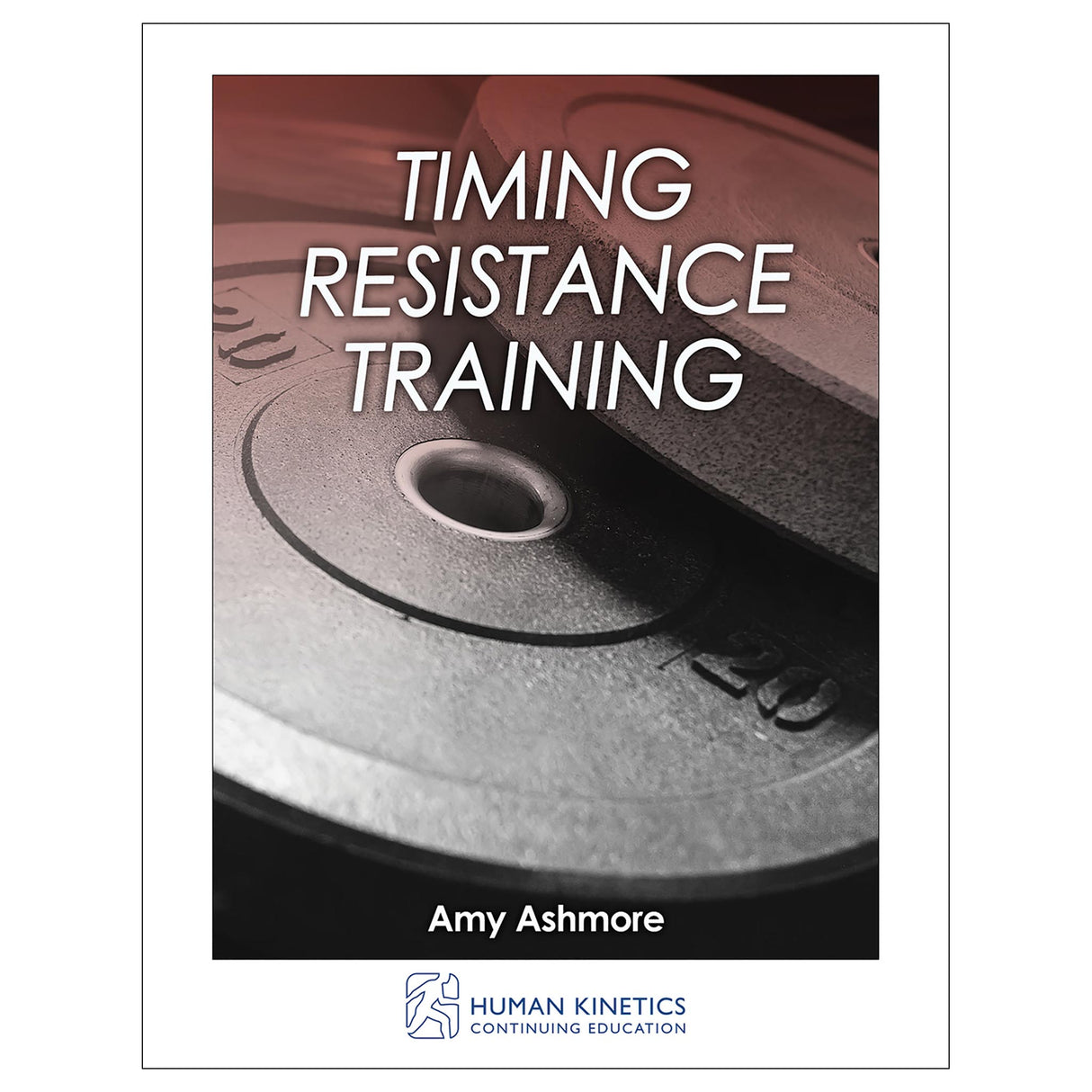Timing Resistance Training Online CE Exam With Print Book
Author: Human Kinetics
$89.00 USD
Human Kinetics strongly recommends that you complete your exam within the calendar year of your date of purchase to ensure approved credits do not expire for your organization.
- Timing Resistance Training book
- Online continuing education exam
Next, you will learn how to cue those internal clocks with purposeful training methods like biomechanical pairing of exercises, complex training, and concurrent training. The book addresses rest as an integral training variable and explores the timing of activity–rest cycles versus recuperation only. The text also discusses the concept of undertraining, an intentional program design adjustment that uses the ability of muscle to anticipate training.
The final chapters offer tools to create training programs for strength, power, and flexibility. These chapters include sample single-session workouts, weekly workouts, and long-term programming routines.
After reading the book, certified professionals can take the companion CE exam to earn continuing education credits.
Learning Objectives
- Understand the concept of muscle clocks.
- Understand interference theory as it relates to endurance training and resistance training.
- Identify mechanisms of interference and training methods to minimize the interference effect.
- Identify timing cues that muscle clocks use to monitor training time intervals.
- Understand how to design concurrent training programs that are not counterproductive.
- Understand the concept of anticipation training and how to apply it to resistance training.
- Understand the concept of intentional undertraining.
- Identify the differences between intentional undertraining and training based on volume and intensity.
- Use the concept of muscle clocks to create workouts for strength, power, and flexibility training.
- Understand how to use suggested exercises along with strategic timing to design resistance training workouts.
Audience
Strength and conditioning professionals, personal trainers, athletic trainers, and other certified fitness professionals.Chapter 1. What Is a Muscle Clock?
Muscle Clocks: Description and Functions
The Master Clock
Regulation and Communication
Application to Resistance Training
Conclusion
Chapter 2. Overcoming Chaos, Confusion, and Interference
Molecular Competition
Interference Theory
Cardiovascular Endurance Training
Muscular Endurance
Muscle Activation Patterns
Competing Muscle Adaptations
Cardiovascular Training Interferes With Resistance Training
Interference Mechanisms
Avoiding Interference
Resistance-Trained Athletes
High-Intensity Interval Training, Sleep, and Athletes
Evidence From Aerobic Endurance Athletes
Time of Day
Programming Summary
Conclusion
Part II. Learn the Tools for Exercise Programming
Chapter 3. Muscle Clocks’ Need for Cues and Recovery
Environmental Cues
Activity–Rest Patterns
Physiological Cues
Exercise Training and Programming
Conclusion
Chapter 4. Applying Biomechanical Similarity to Resistance and Plyometric Exercises
Biomechanical Similarity
Exercise Categories
Conclusion
Part III. Create Effective Training Programs
Chapter 5. Training Muscles to Think and Anticipate
Motor Learning Influences
Programming
Sample Program
Programming Summary Statements
Age-Related Declines in Anticipation
Conclusion
Chapter 6. Undertraining to Maximize Performance
Training Load
Intentional Undertraining
New Approach to Muscle IQ
Rationales for Undertraining
Benefits of Undertraining
Differentiated Programming
Conclusion
Chapter 7. Using Muscle Clocks to Train for Strength
Paired Exercise Resistance Training Model
Resistance Training Programming
Resistance Exercise Pairing Routines
Sample Workouts
Conclusion
Chapter 8. Using Muscle Clocks to Train for Power
Complex Training
Complex Training Programming
Resistance and Plyometric Exercise Pairing Routines
Sample Workouts
Conclusion
Chapter 9. Using Muscle Clocks for Concurrent Training
Concurrent Training
Competing Mechanisms
Using Muscle Clocks to Avoid Interference in Programming
Cardiovascular Programming to Improve Resistance Training Outcomes
Programming Summary Statements
Conclusion
Chapter 10. Using Muscle Clocks to Improve Flexibility
Flexibility and Muscle Performance
Types of Stretching
Muscle Pliability Is a Timing Cue
Muscle Length
Strength and Power Stimulus
Recovery Aid
Flexibility Programming
Programming Summary Statements
Conclusion





